Search Images
Browse Content (p. 860)
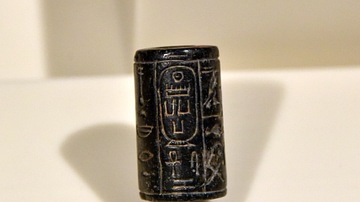
Image
Cylinder Seal of Menkaure
On this basalt cylinder seal, the name of the Egyptian pharaoh Menkaure (2532 - c. 2500 BCE) appears within a cartouche. From Egypt, precise provenance is unknown. Old Kingdom, 4th Dynasty, reign of Menkaure, 2539-2511 BCE. On display at...
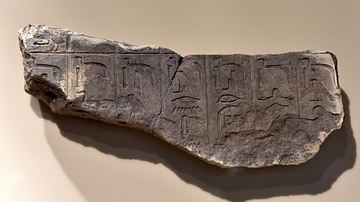
Image
Relief Showing Pepi II's Pyramid Text
The hieroglyphic signs on this painted limestone fragment show parts of spells 354 and 225 of the pyramid texts of the Egyptian Pharaoh Pepi II (2284 - c. 2216 BCE). Old Kingdom, 6th Dynasty, 2279-2219 BCE. From Saqqara, Egypt. On display...
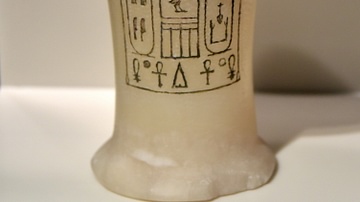
Image
Jar of Pepi II
This calcite-alabaster jar (probably was a container for cosmetic oil) is inscribed with four royal titulary names of the Egyptian Pharaoh Pepi II (2284 - c. 2216 BCE). On the left is the nomen (birth name) of Pepi II. On the right is the...
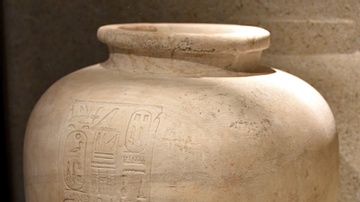
Image
Jar of Pepi I
The hieroglyphic signs on this calcite-alabaster ovoid jar mention the name the Egyptian pharaoh Pepi I and his Sed festival, in addition to naming the pyramid complex of Pepi I (r. 2335-2285 BCE) at Memphis, the capital of the Old Kingdom...
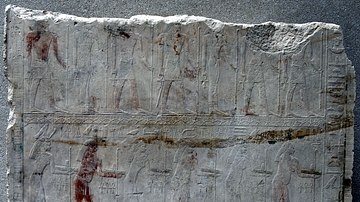
Image
Relief of Deities from the Funerary Temple of Sahure
Limestone relief showing a procession of deities. Painted. From the funerary temple at the pyramid complex of Sahure in Abusir, Egypt. Old Kingdom, 5th Dynasty, 2496-2483 BCE. On display at the Neues Museum, Berlin, Germany.
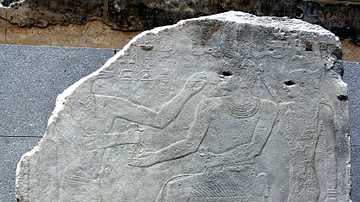
Image
Relief of Niuserre Ini from Abusir
The Egyptian pharaoh Niuserre Ini (Nyuserre Ini, Neuserre Ini) sits on a throne and receives life from Anubis. Old Kingdom, 5th Dynasty, second half of the 25th century BCE. From the mortuary temple of Niuserre at Abusir, Egypt. On display...
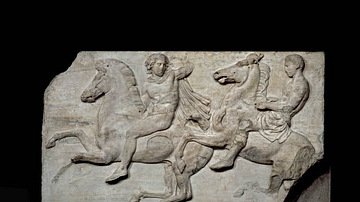
Image
Pair of Horsemen on the Parthenon Marbles
Marble relief (Block II) from the West frieze of the Parthenon. The frieze shows the procession of the Panathenaic festival, the commemoration of the birthday of the goddess Athena. Here two horsemen are shown reining back their horses...
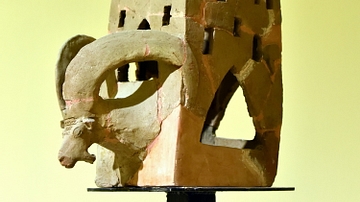
Image
Incense Burner from Tell Bazmusian
This pottery incense burner/container was found at Tell Bazmusian, Lake Dukan, Sulaymaniyah, Iraq. A wild goat is topped by a 2-story house model with a chimney. Hurrian period, mid-2nd century BCE. On display at the Iraq Museum in Baghdad...
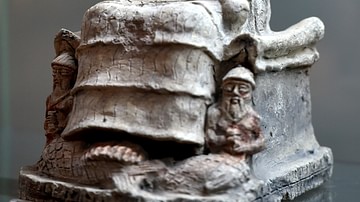
Image
Babylonian Statue of Enki
A statue of Ea, the Akkadian god of water (related to the Sumerian god Enki). Ea is enthroned and holds a cup in his left hand, the right hand has been lost to time. He is accompanied by two creatures (half human and half fish) reclining...
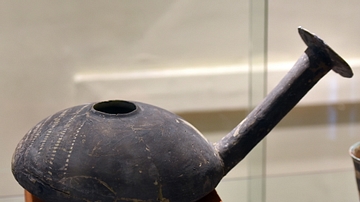
Image
Ewer from Eridu
This pottery jug or ewer is somewhat oval in shape and has a relatively long and straight spout. From Eridu (Tell Abu Shahrain), southern Mesopotamia, Iraq. 3500-2800 BCE. On display at the Iraq Museum in Baghdad.